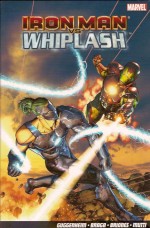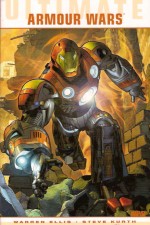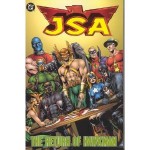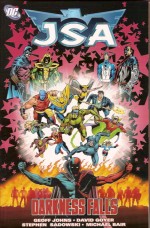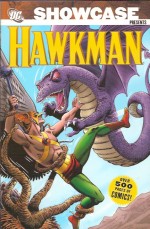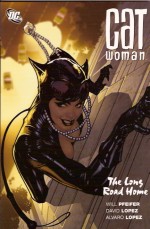
By Jerry Siegel, Leo Dorfman, Jim Mooney & various (DC Comics)
ISBN: 978-1-84856-055-0
Superhero comics don’t often do whimsical and thrilling anymore. They especially don’t do short or self-contained. The modern narrative drive concentrates on extended spectacle, major devastation and relentless terror and trauma. It also helps if you’re a hero who has come back from the dead once or twice or wear a combat thong and thigh boots…
Although there’s nothing intrinsically wrong with that, sometimes the palate just craves a different flavour. Once this continued cosmic cataclysm was the exception not the rule, and this second enchanting black and white compendium of the early career of Superman’s cousin Kara Zor-El of Argo City happily displays why.
After a few intriguing test-runs Supergirl began as a future star of the expanding Superman pocket universe in Action Comics #252 (May 1959). Superman’s cousin Kara had been born on a city-sized fragment of Krypton, hurled intact into space when the planet exploded. Eventually Argo City turned to Kryptonite like the rest of the detonated world’s debris, and her dying parents, observing Earth through their scopes, sent their daughter to safety as they perished. Landing on Earth, she met Superman who created the identity of Linda Lee and hid her in an orphanage in small town Midvale whilst she learned of her new world and powers in secrecy and safety.
This second collection, encompassing all the Girl of Steel’s adventures from the back of Action Comics #283 (December 1961) to #321 (February 1965), finds the young heroine still in training, her very existence kept secret from the general public and living with adoptive parents Fred and Edna Danvers – who are also completely unaware that the orphan they have recently adopted is a Kryptonian super-being.
The accent on these stories generally revolves around problem-solving, identity-preserving and loneliness, with both good taste and the Comics Code ensuring that readers weren’t traumatised by unsavoury or excessively violent tales. Such plots, akin to situation comedies, often pertained, as in the first story represented here: ‘The Six Red “K†Perils of Supergirl!’, by Jerry Siegel and regular artist Jim Mooney.
Peculiar transformations were a mainstay of 1960s comics, and although a post-modern interpretation might discern some metaphor for puberty or girls “becoming†women, I rather suspect the true answer can be found in the author’s love of comedy and an editorial belief that fighting was unladylike. Red Kryptonite, a cosmically altered isotope of the radioactive element left when Krypton exploded, caused temporary physical and sometimes mental mutations in the survivors of that doomed world – a godsend to writers in need of a challenging visual element when writing characters with the power to drop-kick planets…
Here the wonder-stuff generates a circus of horrors, transforming Supergirl into a werewolf, shrinking her to microscopic size and making her fat (I’m not going to say a single word…).
The drama continued in the next instalment, ‘The Strange Bodies of Supergirl!’ wherein she grew a second head, gained death-ray vision (ostensibly!) and changed into a mermaid. This daffy holdover to simpler times presaged a big change in the Maid of Might’s status as with the next issue her parents learned her true origins and her existence was revealed to the world in the two-part saga ‘The World’s Greatest Heroine!’ and ‘The Infinite Monster!’ both appearing in issue #285, as Supergirl became the darling of the universe: openly saving the planet and finally getting the credit for it.
Action #286 pitted her against her cousin’s greatest foe in ‘The Death of Luthor!’, whilst ‘Supergirl’s Greatest Challenge!’ saw her visit the Legion of Super-Heroes (quibblers be warned: initially their far-future era was the 21st century. It was quietly retrofitted to a thousand years from “now†after the tales in this volume) and save the Earth from invasion. She also met the telepathic descendent of her cat Streaky. His name was Whizzy (I could have left that out but chose not to – once more for smug, comedic effect…).
‘The Man who Made Supergirl Cry!’ signaled the beginning of Leo Dorfman’s run as scripter. Little is known about this prolific writer, other than he also worked under the name Geoff Brown, producing quality material continuously from the Golden Age until his death in 1974. In this tight little thriller Phantom Zone villains took control of Supergirl’s new dad in a plot to escape their ethereal dungeon dimension, whilst #289’s ‘Superman’s Super-Courtship!’ is something of a classic, as the Girl of Steel scoured the universe for an ideal mate for her cousin. Charming at the time, modern sensibilities might quail at the conclusion that his perfect mate was just like Supergirl herself, but older…
‘Supergirl’s Super Boy-Friends!’ saw both human Dick Malverne and Atlantean mer-boy Jerro catch super-powers after kissing her (I’m again saying nothing here) whilst she didn’t actually become ‘The Bride of Mr. Mxyzptlk!’ when the fifth dimensional prankster transferred his unwanted attentions to her in Action #291.
An extended storyline began in the next issue when the girl got a new “petâ€. ‘The Super-Steed of Steel!’ was a beautiful white horse who helped her stave off an alien invasion, but the creature had a bizarre and mysterious past, revealed in ‘The Secret Origin of Supergirl’s Super-Horse!’, and a resolution of sorts was reached in ‘The Mutiny of Super-Horse’.
A new cast member joined the series in ‘The Girl with the X-Ray Mind!’, a psychic with a shocking connection to the Superman Family, and her secrets were further revealed in ‘The Girl who was Supergirl’s Double!’ It was the beginning of an extraordinarily tense and epic continued storyline that featured Phantom Zone villains, Luthor, Supergirl’s arch enemy Lesla Lar, the destruction of Atlantis and genuine thrills and excitement. Earth was threatened by ‘The Forbidden Weapons of Krypton!’ and it took ‘The Super-Powers of Lex Luthor!’ to finally save the day.
Action #299 returned to whimsical normality with ‘The Fantastic Secret of Superbaby II!’, and the anniversary 300th issue featured ‘The Return of Super-Horse!’: another multi-part tale that revealed ‘The Secret Identity of Super-Horse!’ in #301, only to suffer ‘The Day Super-Horse went Wild!’ in the next episode.
By this time Supergirl was featured on every second Action Comics cover, and was regularly breaking into the lead Superman story. All those covers, by art dream-team Curt Swan and George Klein are collected herein, as is their Dorfman-scripted Man of Steel tale ‘The Monster from Krypton!’ from #303, with Supergirl having to battle her Red K transformed cousin. Sadly the art is misattributed to Mooney in the credits, but he actually did draw the moving tragedy of ‘Supergirl’s Big Brother!’ for his regular second-feature in that issue.
Supergirl got a new arch-enemy in ‘The Maid of Menace!’ but Black Flame was not as problematic as ‘The Girl Who hated Supergirl!’ (again solely credited to Mooney but I’m pretty sure its at least part-inked by John Forte). Action #306 was a pure mystery thriller as Girl of Steel became ‘The Maid of Doom!‘ whilst ‘Supergirl’s Wedding Day!’ almost proved that no girl can resist a manly man… almost!
‘The Super-Tot from Nowhere!’ proved to be a most difficult adventure in babysitting and #309’s ‘The Untold Story of Argo City!’ began another long saga revealing the true fate of Kara’s Kryptonian mum and dad, whilst ‘Supergirl’s Rival Parents!’ saw her having to chose between them and her Earth family.
More equine revelations came on ‘The Day Super-Horse Became Human!’ whilst eerie coincidence was examined in ‘The Fantastic Menace of the “LL’sâ€.’ ‘Lena Thorul, Jungle Princess!’ brought the troubled psychic back into the Girl of Steel’s so-complicated life, and the soap opera screws began really tightening when parent trouble resumed in ‘Supergirl’s Tragic Ordeal!’
It was the start of another wicked plot, continued in ‘The Menace of Supergirl’s Mother!’ and concluded in ‘Supergirl’s Choice of Doom!’, but the heroine’s problems were only beginning. In Action #317, Luthor’s latest scheme resulted in ‘The Great Supergirl Double-Cross!’, after which her life changed forever when ‘Supergirl Goes to College!’
Now nominally on her own at sedate Stanhope College, the dramas of catty rival and suspicious sorority sisters were added to identity preserving, boy-chasing and superhero-ing, but first she had to prove she wasn’t ‘The Super-Cheat!’ to keep her place at university. ‘The Man Who Broke Supergirl’s Heart!’ was not only a cad but an alien one, and this volume finishes on an emotional high with #321’s ‘The Enemy Supergirl!’ stuffed with intrigue, imposters and even coma-patients…
Throughout this four-odd year period Kara of Krypton underwent more changes than most of her confreres had in twenty years, as the editors sought to find a niche the buying public could resonate with, but for all that these stories remain exciting, ingenious and utterly bemusing. Possibly the last time a female super-character’s sexual allure and sales potential wasn’t freely and gratuitously exploited, these tales are a link and window to a far less crass time and display one of the few strong female characters that parents can still happily share with their youngest girl children. I’m certainly not embarrassed to let any women see this book, unlike any “Bad-Girl†book you could possibly name.
© 1961-1964, 2008 DC Comics. All Rights Reserved.

